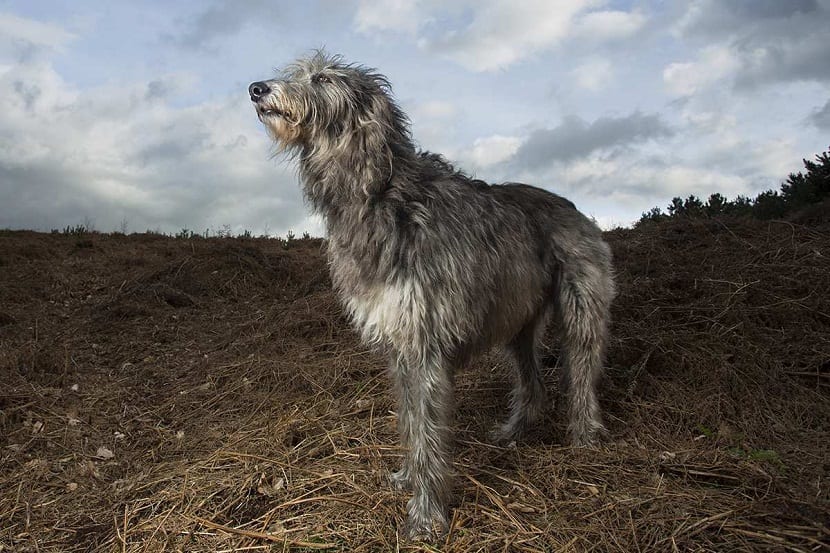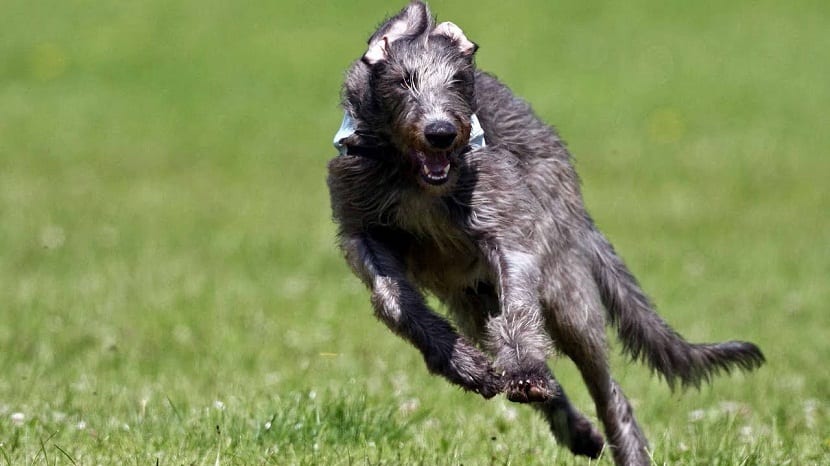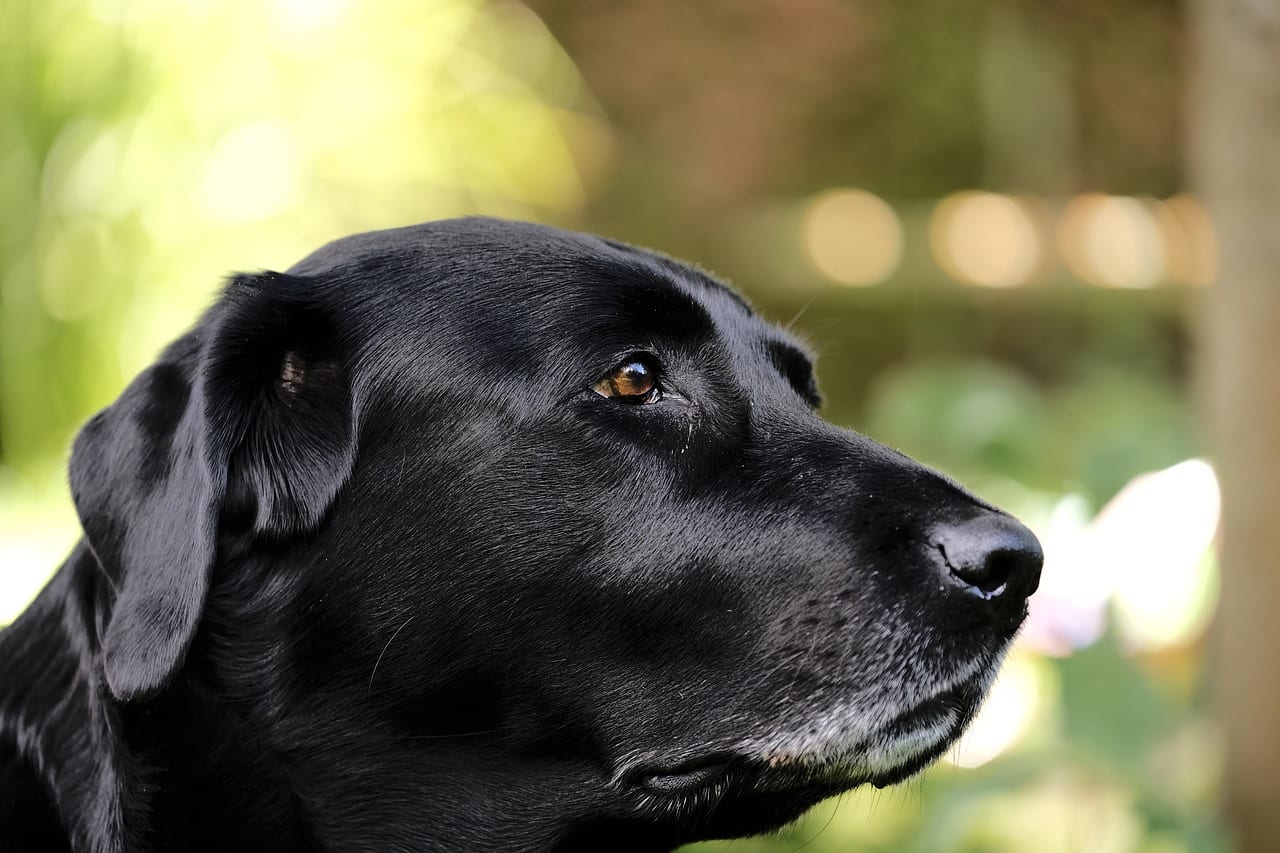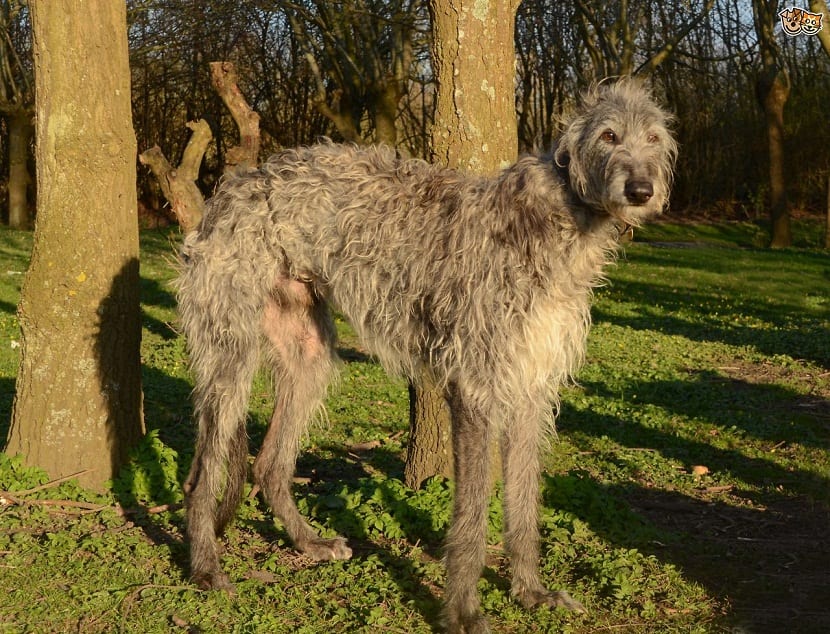
The Scottish Greyhound is also known by the name of Deerhound. This mascot is the personification of balance of the contrasts between activity, games and sedentary lifestyle. He has an imposing and intimidating appearance, but he is extremely playful and friendly and often combines demanding physical activity with long hours of rest.
He is affectionately known as the 'Royal Dog of Scotland '. The Deerhound has a romantic past due to its noble bearing and extremely tender instincts. The breed is privileged to have been described by Sir Walter Scott as a perfect, heavenly creature.
History of the Royal Dog of Scotland

The origin of the Scottish Greyhound is lost in the history of the Scottish highlands, since there is faithful documentation and it is known that they were used in the XNUMXth century for hunting deer. It is suspected that they were also used to hunt wolves.
The fact that this large pet has been used for this particular job makes it possible to determine that only owned by people of the nobility, since only in a high social rank the hunting of deer was allowed. Although it was a privilege to own noble people, this also represented a significant limitation to the breed. The continuous conflicts between clans and battles against the rule of the English had a negative impact on the expansion of the race, placing it on the brink of extinction during the XNUMXth century.
The World Wars were a terrible scenario for all living beings and the race decreased in number so much that it only happened to be enjoyed by an elite group of the nobility. At the moment, is among the rare breeds and is highly prized among sighthounds. It has expanded with great success outside the old continent, reaching destinations as far away as Australia and Canada.
This breed is also gradually colonizing hearts and homes, making it an interesting option as a companion dog with very particular characteristics. It has had outstanding international recognition manifested in its recognition by the AKC since the XNUMXth century. The FCI accepted the Deerhound in 1955, and the most recent approval of valid standards was in 2012.
Features
The Greyhound Dog Breed has specific characteristics related to a specially gifted physique to be fast in the races, being for that reason that the dogs of this breed are usually tall and long in body. They have semi-straight ears and a more developed vision than other canine breeds. Sighthounds have been widely used in hunting fast and agile prey such as: hares, rabbits and deer.
The specific characteristics of the Scottish Greyhound start with a height at the withers of between 71 and 76 cm and with a weight of approximately 45 kilos. Coat colors can be very distinctive gray, blue-gray or brindle. They have fur on the beard, mustache and head, whose texture is softer than the rest of the body and its elegant appearance is accompanied by a strong and long stylized neck.
Temperament

When it comes to personality, this breed of dog certainly has a special mention for canine chivalry. The character is sweet and gallant, without losing strength and sensitivity. His bravery is outstanding and he combines it with alertness. All of these qualities are perfectly balanced by delicacy, loyalty, and a reassuring demeanor.
Its behavior does not show any traits of aggressiveness, so it is ideal for children, but not as a guard dog. However, their size can generate a state of alert and caution in strangers it tends to disappear quickly when showing its character. The Deerhound requires adequate education in socialization, both with humans and with other pets. His character and way of educating is the same as that of the Spanish greyhound, being two very similar breeds of dogs.
Management
The Scottish Greyhound or Deerhound is not characterized by having a low maintenance cost, but nevertheless, this does not mean that it is totally inaccessible, but it does require attention and care. Under favorable conditions you can reach a life span of between eight and eleven years.
The breed can present different congenital diseases, so the owner must be very attentive. The veterinarian will have to make the pertinent reviews and make the specific recommendations for the breed. It is important to highlight that most sighthounds are very sensitive to anesthesia, painkillers and drugs in general, this is due to the low level of body fat they have.
The Deerhound's deep torso makes it susceptible to a stomach condition known as gastric swelling or torsion, being able to be mortal. Stress is really a complication for the breed and they should never be covered before reaching maturity.
Among the diseases to which they may be sensitive are: dilated cardiomyopathy. This abnormality makes the heart work hard and enlarge. Symptoms owners should look out for are weight loss, loss of appetite, bloating, mild cough, shortness of breath, and depression. There is no cure, but there is a viable treatment to improve the pet's living conditions.
The bone structure of sighthounds makes them particularly prone to osteosarcoma, a very aggressive bone cancer which is treated with chemotherapy and surgical amputation. Factor VII deficiency is diagnosed at any age and the symptoms are excessive bleeding.

The different allergies are also a frequent problem in the breed and are treated by identifying the origin or causes of it. Some can be controlled and even eradicated depending on the severity and the haste with which it is dealt with. Last is hypothyroidism. If it occurs, it is controlled with hormonal medications that can make the pet live his life without complications.
Food and care

The size of the Deerhound and the amount of energy they must expend causes this pet to consume a average of 900 grams of food per day. When he is a puppy, he must eat more often than in the adult stage, both due to his stage of development and his natural restlessness.
Veterinary control and being attentive to any changes in their behavior and routine is essential. Although you may feel a bit lazy at times, it is vital that you take at least one walk daily. It ideal is that it has enough space to walk and play.
The bath will be done only when necessary, and the coat will be brushed once a week. The skin will be inspected very well to act quickly in case of finding signs of parasites, infections or fungi. Nails are trimmed once a month to prevent natural wear. They are friendly as companion dogs, but their greyhound nature should not be forgotten. Education is an effort that must be done from a puppy and with enough patience and reward.